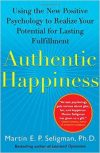
By Todd J. Sukol
Like many in the nonprofit sector, I have spent much of my career in small staff environments. The nimbleness, entrepreneurial spirit and experimentalism this enables can be exhilarating and productive. It can be stressful too, particularly when resources are limited. This can lead to something of a hero mentality, where talented and passionate zealots take on too much work. To make matters worse, when leaders (especially founders) do share responsibility, they have a tendency to choose “clones,” people they feel will handle things the way they would. It takes most of us awhile to internalize and operationalize what we already know intellectually – that a well-run organization requires diversity of skills.
But diversity of skills is not good enough. Once we become proficient at creating and managing teams with balanced skills, there is a more complicated kind of diversity we must master, diversity of personality. Teams are made up of human beings, and balancing diverse attitudes and attributes among team members can go a long way to developing teams that innovate, problem solve and make healthy decisions. Attempting to build organizations by replicating, rather than complementing, leaders’ strengths dampens progress, limits capacity and diminishes potential outcomes. Teamwork, it seems, doesn’t come naturally in our nonprofit sector.


“In fostering innovation and originality,” Rabbi Segal told me, “I am a big proponent of avoiding groupthink. The way to do that is by making sure that there is real diversity of thought on the team – not just people playing devil’s advocate.” He described a team member with whom he often finds himself disagreeing this way: “On a range of issues, we have ended up on different sides of the proverbial aisle, and heated debates have ensued. And not despite this, but because of this, [I view him as an] invaluable asset of our Shalhevet faculty.”
This balancing act can be a struggle, but it a challenge well worth undertaking.
Short of bringing in a group dynamics consultant (which may not be a bad idea) here are some approaches to personality balance in the workplace you may find useful. Be cautioned though, that they are often misued to put people into rigid categories. I find that tendency overly simplistic, dehumanizing and counterproductive at best. For a thoughtful and sensitive leader, however, knowledge of these categorization schemes can help you develop your own framework for thinking about your team and how to bring out the best in it:
Probably the best known resource in this arena is the Myers Briggs Type Indicator test, which identifies 16 personality types. Though it has fallen off the “flavor of the month” list of late, it is still worth playing with.
Another approach is outlined in this very basic piece, which defines personality as “the sum total of the physical, mental, emotional, and social characteristics of an individual,” and describes five basic personality types.  A third approach is outlined in Tom Rath’s Strengths Finder 2.0 protocols, a version of which I recently underwent in the context of a new project we are working on at the Mayberg Foundation.
A third approach is outlined in Tom Rath’s Strengths Finder 2.0 protocols, a version of which I recently underwent in the context of a new project we are working on at the Mayberg Foundation.
 And to end with my own personal beginning on this journey, I suggest you set aside time to take the VIA Survey of Strengths, an outgrowth of Dr. Martin Seligman’s Positive Psychology. Reading his book Authentic Happiness was an important step for me as well.
And to end with my own personal beginning on this journey, I suggest you set aside time to take the VIA Survey of Strengths, an outgrowth of Dr. Martin Seligman’s Positive Psychology. Reading his book Authentic Happiness was an important step for me as well.
Dive into some of the resources listed above and be loose in your thinking. You will soon develop your own style for uncovering what makes each of your team members thrive as individuals and how to facilitate and orchestrate a workplace that gives them the opportunity to thrive as a team as well. Ultimately, this is probably the single most important thing you can do to advance your organization’s vision, mission and values.



